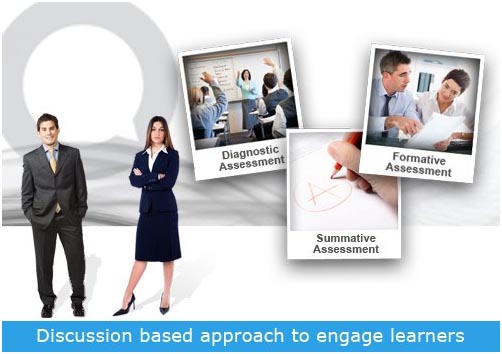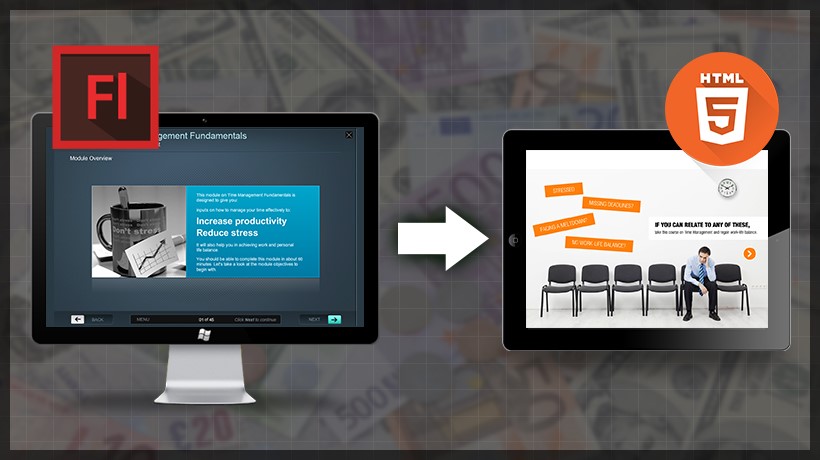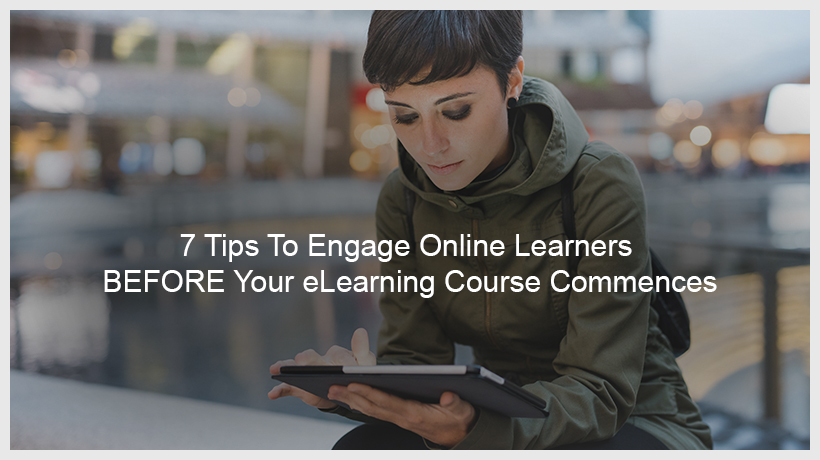
With the wider adoption of eLearning and mobile learning comes the associated challenge of “one size does not fit all.” This article first explores how personalized learning for employee training can address this challenge, followed by highlighting its top 10 benefits.
What Is Personalized Learning?
Personalized learning tailors the educational experience to meet individual learner needs, preferences, and goals. It differs from the one-size-fits-all approach by recognizing the uniqueness of each learner and adjusting teaching methods accordingly. This approach involves several key elements:
- Customization: Adapting learning content and pace to suit each learner’s abilities and learning style.
- Learner Agency: Empowering learners to take charge of their learning journey, including setting goals and choosing learning paths.
- Data-Driven: Utilizing data and feedback to continuously adjust learning strategies and materials for optimal effectiveness.
- Technology Integration: Leveraging digital tools and platforms to facilitate a more personalized learning experience.
- Continuous Assessment: Regularly evaluating learner progress to inform future learning paths and interventions.
Characteristics of Personalized Learning
Personalized learning is characterized by several distinct features that set it apart from traditional educational methods. Understanding these characteristics helps in effectively implementing and benefiting from this approach:
- Learner-Centered Approach: Focuses on the needs, interests, and learning styles of each individual student.
- Flexible Learning Pace: Allows students to learn at a pace that suits them, which can vary from one topic to another.
- Customized Learning Paths: Offers tailored learning experiences based on the learner’s strengths, weaknesses, and interests.
- Use of Technology: Incorporates digital tools and platforms to facilitate customization and tracking of learning progress.
- Regular Feedback and Assessment: Involves continuous monitoring of learner progress and adapting teaching strategies accordingly.
- Collaborative Learning Environment: Encourages interaction between learners and educators for a more dynamic learning experience.
- Goal-Oriented: Focuses on achieving specific learning objectives that align with the learner’s personal or career goals.
What is the Need for Personalized Learning?
The need for personalized learning stems from the growing recognition that traditional one-size-fits-all educational models are often inadequate in meeting diverse learner needs. Key points highlighting this need include:
- Diverse Learning Styles: Recognizing that students have varied learning styles and preferences, which require different teaching approaches.
- Technological Advancements: Leveraging technology to facilitate individualized learning experiences.
- Enhanced Engagement: Personalized learning increases student engagement and motivation by catering to their interests.
- Closing Learning Gaps: Addressing individual weaknesses and strengths to ensure all learners achieve their full potential.
- Preparation for a Diverse World: Equipping learners with skills and knowledge tailored to their future roles in a rapidly changing world.
- Inclusivity: Ensuring that education is accessible and effective for students with different backgrounds and abilities.
What are the Benefits of Personalized Learning?
For Learners:
- Improved Engagement and Motivation: Personalized learning engages learners by aligning content with their interests and goals.
- Better Learning Outcomes: Tailored instruction enhances understanding and retention of knowledge.
- Increased Confidence: Learners feel more confident as they experience success in a learning environment that suits their pace and style.
- Greater Autonomy: Empowers learners to take control of their learning journey, fostering independent learning skills.
For Organizations:
- Enhanced Performance: Employees trained with personalized methods often show improved job performance.
- Higher Retention Rates: Personalized learning can lead to greater employee satisfaction and retention.
- Cost-Effectiveness: Efficient learning paths reduce training time and costs.
- Adaptability: Organizations become more adaptable as employees acquire skills tailored to evolving business needs.
What is the Difference Between Traditional Training and Personalized Learning?
- Content Delivery: Traditional training often follows a standardized curriculum, whereas personalized learning adapts the content to meet individual learner needs.
- Pace of Learning: In traditional settings, all learners progress at the same pace. Personalized learning allows individuals to learn at their own pace.
- Teaching Methods: Traditional training uses a uniform teaching method, while personalized learning employs various methods suited to different learning styles.
- Assessment: Traditional assessments are uniform, whereas in personalized learning, assessments are tailored to each learner’s progress.
- Learner Engagement: Personalized learning typically results in higher engagement by addressing specific interests and needs of the learner.
What is the Difference Between Adaptive Learning and Personalized Learning?
- Learning Approach: Adaptive learning uses algorithms to adjust the difficulty and type of content based on learner performance, while personalized learning tailors the learning experience more broadly, considering interests, goals, and learning styles.
- Focus: Adaptive learning focuses on real-time adjustments during the learning process, whereas personalized learning involves planning a unique learning path for each learner.
- Technology: Adaptive learning relies heavily on technology to analyze performance and adapt content, while personalized learning can incorporate both tech-based and traditional methods.
- Learner Control: In personalized learning, learners often have more control over their learning choices, whereas adaptive learning is mostly automated.
Challenges of Personalized Learning
Implementing personalized learning comes with its own set of challenges:
- Resource Intensive: Requires significant time and effort to develop and maintain personalized content.
- Technological Constraints: Dependence on technology can be a barrier, especially in environments with limited digital infrastructure.
- Training and Development: Instructors and facilitators need training to effectively implement personalized learning strategies.
- Data Privacy Concerns: Collecting and analyzing learner data raises privacy and security issues.
- Scalability: Personalizing learning for a large number of learners can be challenging.
- Balancing Standardization and Personalization: Finding the right balance between personalized content and standardized educational goals can be difficult.
How does personalized learning work?
Personalized learning works through a series of steps and methodologies tailored to individual learner needs:
- Assessment of Learner Profiles: Initial assessments to understand each learner’s strengths, weaknesses, interests, and learning styles.
- Customized Learning Paths: Designing unique learning paths based on the learner’s profile.
- Integration of Technology: Utilizing digital platforms and tools for delivering personalized content and tracking progress.
- Continuous Feedback Loop: Regular assessments and feedback to adapt the learning path as needed.
- Learner-Centric Approach: Focusing on the learner’s goals and preferences in the design and execution of the learning process.
Learning technology to help you with personalized learning?
Various learning technologies can aid in implementing personalized learning:
- Learning Management Systems (LMS): Platforms like Moodle or Blackboard facilitate the delivery of customized content and track learner progress.
- Adaptive Learning Platforms: Tools that adjust learning content based on learner performance and feedback.
- Analytics Tools: Software that analyzes data to understand learner behavior and preferences.
- Artificial Intelligence (AI): AI can personalize learning experiences by adapting content in real-time.
- Mobile Learning Apps: Enable learning on-the-go with personalized content accessible from mobile devices.
How do you make a personalized learning plan?
Crafting a personalized learning plan entails several key steps:
- Assess Learner Needs and Goals: Start by understanding the learner’s current knowledge level, learning style, and objectives.
- Set Specific Learning Outcomes: Define clear, measurable goals for the learning plan.
- Choose Appropriate Content and Resources: Select materials that align with the learner’s needs and learning style.
- Determine Learning Methods and Technologies: Decide on the methods (e.g., online courses, workshops) and technologies (e.g., LMS, AI tools) to be used.
- Develop a Flexible Timeline: Create a realistic timeline that allows for adjustments based on learner progress.
- Incorporate Continuous Feedback and Assessment: Plan regular check-ins and assessments to track progress and make necessary adjustments.
- Review and Revise the Plan Regularly: Continuously evaluate the effectiveness of the plan and make revisions as needed.
Different Levels of Personalized Learning
Next, let us look at the techniques you can use to offer personalized learning for employee training. I will be addressing each of these aspects as I outline various techniques.
1. Basic Level Of Personalized eLearning
The basic techniques include:
- Flexibility to choose a font, theme, or background for the eLearning course.
- Create a profile and select an avatar (or upload the learner’s image).
2. Intermediate Level Of Personalized eLearning
I feel that the challenge of being able to address divergent needs on account of different learning styles is a tough one to crack. However, the following techniques will help in minimizing this challenge:
- Selection of audio
At the beginning of the course, you can provide learners with the control of opting for audio or otherwise. (To provide this flexibility, you need to ensure that the usage of the audio strategy does not limit the onscreen text. This can be achieved by having minimal audio that threads all the frames, but the onscreen text covers the voice-over. Alternatively, if you have extensive audio, the non-auditory learner needs to have access to a transcript, and this can still retain their interest). - Selection of different formats (in case of bandwidth challenges)
In certain geographies, the learners may need the flexibility to achieve the same learning outcome but without the approaches that hog bandwidth. (To manage this, you can replace videos with slideshows.) - Selection of videos vs interactive learning
Many learners demand flexibility to opt for an engaging video that is non-interactive to understand a given concept and then have interactive exercises to practice. You can offer this flexibility to the learners.
3. Advanced Level Of Personalized eLearning
This level offers a customized learning path that can be selected based on:
- The learner’s role
- The learner’s region
This can also have the option for versions that are available in the local language. - The learner’s proficiency
A personalized learning path can be provided based on the learner’s proficiency that is judged through a test (pre-assessment). The test must be designed with a granularity that enables you to direct learners to the section they should go through or what they can skip. - The learner’s interest
Instead of the prescriptive approach of the pre-assessment, the control can be given to learners, and they can create a personalized learning path based on the areas of interest. Alternatively, they can be asked to fill in a survey form and then the system can make recommendations based on their selected areas. - Personalized feedback to enhance the learning experience
In this comprehensive article on personalized learning for employee training, we explored the unique aspects of personalized learning, its necessity, and its benefits for both learners and organizations. We compared it with traditional and adaptive learning methods, addressed its challenges, and outlined how it functions. We also discussed the technology that supports personalized learning and the steps to create a personalized learning plan. Emphasizing the transformative potential of personalized learning in modern education and training contexts, this holistic approach offers valuable insights.
- Enhance Your Learning Strategy with the eLearning Trends in 2019 - August 8, 2020



